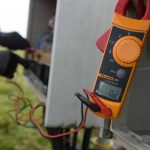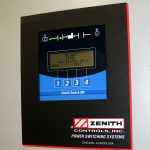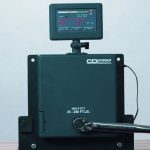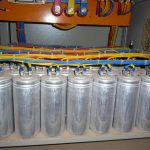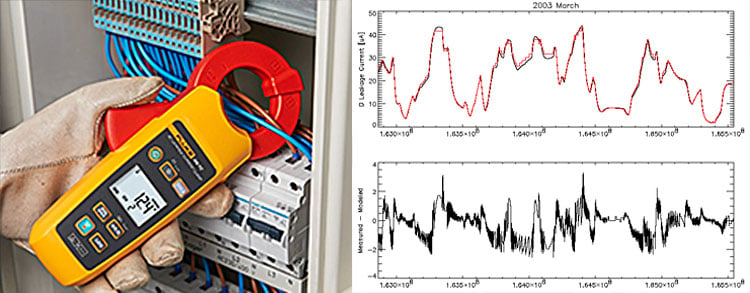
Leakage current is the current that streams from either DC or AC circuit in an equipment to the ground or framework and can be from the output or input. If the equipment is not properly grounded, the current flows through other paths such as the human body. This mighty also occur if the ground is incompetent or is disrupted unintentionally or intentionally.
The leakage current in an equipment flows when an unintentional electrical connection occurs between the ground and an energized part or conductor. The ground may be the reference point of zero voltage, or the earth ground. Ideally, the current leaking from the power supply unit should flow through the ground connection and into the installations earth ground.
The inadequacies in the materials that build up the elements like the capacitors and semiconductors are the main cause of leakage current. These results in to small current leaking or flowing through the through the dielectric, in the case of a capacitor.
This measurement is done during the electrical safety test of a device. The currents flowing through the protective conductor or metallic parts of the earth are measured.
Why is Leakage Current Measurement Important?
Electrical system usually consists of a grounding technique that offers shield against a shock hazard if an insulation fault occurs. The grounding system comprises of a grounding rod that connects the instrument to the earth. If ever a disastrous failure of insulation between power line and conductive parts occur, the voltage will be pushed to ground. The current that is created because of this event will flow, causing a circuit breaker to open or a fuse to blow thus avoiding a shock hazard.
Clearly, a shock hazard prevails if the earth or ground connection is intruded, either accidentally or intentionally. The possibility for a shock might be larger than assumed if there is case of leakage currents. Even in the scenario of no insulation failure, intrusion of leakage currents streaming through the grounding rod still pose a threat of electric shock to somebody meeting the ungrounded system and ground at the same time.
This is a huge concern when it comes to the field of medical applications, where a patient might be the receiver of the electric shock. A shock can be even fatal if the patient is weak or unconscious, or if the current flows to internal organs. The two-layered insulation offered in non-grounded equipment ensures protection. The security in this scenario is made sure because both coats of insulation are not likely to collapse together. Nevertheless, the situations that leads to leakage currents still exists and must be considered.
Hence, how can you eradicate or reduce the outcomes of leakage current? Measure the leakage current and then recognize the cause. Purpose of the Test is to measure the amount of current that passes through a person when that person touches an electrical product.
What is Done During Leakage Current Measurement?
- Meter particularly designed for determining leakage currents is utilised.
- The current streaming through the ground rod is quantified by attaching the meter in series with the earthing connection.
- The ground connection is unsealed and the current streaming to the neutral side of the power line is measured, for data processing equipment.
- The meter may also be connected between the outputs of the power supply and ground.
- Test conditions consists of exchanging the neutral connections and ac line and turning power switches on and off while monitoring the current.
- The test is done once the system has warmed to typical functioning temperature.
- The intention is to identify and measure the worst-case leakage current.
- For very small leakage currents, the meter is substituted with a network comprising of either a resistor or a resistor and capacitor grouping.
- The voltage drop throughout the network is then quantified using an ac voltmeter.
- Double-insulated equipment or ungrounded is verified by attaching the meter amid any touchable conductive part and earth.
- A copper foil of a specific dimension is placed on the housing, for a nonconductive housings, and the current flowing from it to ground is determined.
| Type of Equipment | Maximum Leakage Current |
| Class I | 0.75mA for hand held devices |
| 3.5mA for other devices | |
| Class II | 0.25mA |
| Class III | No hazardous voltages |
How is Leakage Current Measurement Performed?
Direct Measurement
Direct measurement has precision and a meter especially designed for determining leakage currents is used. The current flowing in the ground conductor is measured by connecting the meter in series with the grounding connection of the device concerned.
Leakage current clamp meter is the most popular device used to measure leakage current. They are like the clamp meters utilized for finding load currents but gives considerably better results when quantifying currents less than 5mA. Generally, clamp meters wouldn’t register such small currents. After we position the jaws of a clamp meter around a conducting rod or wire, the current reading is taken, and the value depends upon the intensity of the alternating electromagnetic field around the conductor. The clamp meter will identify the magnetic field around conductors like a wire armor cable, single core cable, a water pipe etc. The paired neutral and phase conductors of a single-phase circuit, or all live conductors of a three-phase circuit.
Testing different kinds of conductors:
- When testing the grouped live conductors of a circuit, the magnetic fields produced by the load currents cancel each other out. Any uneven current coming from the conductors to ground is measured with a leakage clamp meter and must have a reading less than 0.1 mA.
- If you performed an insulation test on a circuit that was powered down, the result would be in the range of 50MΩ or further, because the insulation tester utilizes s a dc voltage for checking, which do not consider the capacitive effect.
- If you measured the same circuit loaded with office equipment, the result would be significantly different due to the capacitance of the input filters on these devices.
- When a lot of parts of equipment are functioning on a circuit, the result will be collective, that is, the leakage current will be greater and could well be in the range of milliamps. Adding new pieces of equipment to a circuit protected by a GFCI could trip the GFCI. And as the value of leakage current differs based on how the equipment is functioning, the GFCI may trip unintentionally.
- When telecommunications equipment is present, the value of leakage indicated by a clamp meter may be considerably more than that resulting from insulation impedance at 60 Hz because, telecommunications system usually consists of filters that generate functional grounding currents and other gears that generates harmonics, etc.
Measurement of Leakage Current to Ground
- When the load is switched on, the leakage current measured includes leakage in load equipment. If the leakage is adequately small with the load attached,
- then circuit wiring leakage is even smaller. If circuit wiring leakage alone is required, disconnect the load.
- If you test single-phase circuits by clamping the phase and neutral conductor, the obtained amount will be any current streaming to ground.
- Test 3 phase circuits by fastening a clamp around all 3 phase conductors. If a neutral is present, it must be clamped along with the phase conductors and the measured amount will be any current flowing to ground.
Measuring leakage current through the ground conductor
- To quantity the sum of leakage streaming to the proposed earth connection, position the clamp around the ground rod.
Measuring leakage current to ground via unintentional paths to ground.
- Clamping neutral/phase/ground all together recognizes uneven current that means leakage at a passage or electrical panel via unintended pathways to ground.
- If a connection to a water pipe or other electrical connections occur, similar inequality might happen.
Tracing the source of leakage current
- This series of measurements identifies the overall leakage and the source. The first measurement can be made on the main conductor to the panel.
- Measurements 2 to 5 are made consequently to find out circuits carrying the bigger amounts of leakage current.
Leakage Current Measurement in Medical Devices
The objective of the Leakage Current test is to verify that the electrical insulation used to protect the user from a Risk of Shock is suitable for the application. Leakage Current testing is used to verify that the product does not leak excessive current when contacted by the user. For medical equipment, the current flowing to ground is measured.
- Excessive leakage current can cause the heart to go into ventricular fibrillation resulting in cardiac arrest which can lead to death.
- Leakage current measurement levels depend on the amount of capacitance in the products’ solid insulating materials. Different types and number of layers of an electrical insulation results in varying amounts of inherent capacitance through the insulation. This capacitance causes low amounts of current to “leak” through the insulation.
- Leakage current levels can be significantly elevated in products that are subject to EMI requirements (FCC, CE-EMC). These products must incorporate EMI filters on their incoming mains power to provide clean power to sensitive electronics while also protecting from radiating emissions back onto the power line. These filters incorporate capacitors to ground, these capacitors can cause high leakage current when operating normally. If the product is for professional use only, the standard may permit high leakage current with warning markings for the user to insure the product is reliably grounded (so the user isn’t subjected to the high leakage current). Otherwise, an isolation transformer must be added to power the product thereby isolating the product from ground – which will almost eliminate leakage current to ground.
Hipot Leakage Current Testers
- The HIPOT test also called Dielectric Withstand Test is a routine test that is performed in electrical production industry. This is a high voltage test that stresses the insulation of an electrical product far 80 M.
- If the insulation of product can withstand a much higher voltage for a given time, then it can withstand normal voltage for its whole life.
- The basic function of HIPOT tester is to monitor excessive leakage current to ground.
- Hipot tester applies a high voltage across the insulation of device that is tested. This is generally higher 1400 Volts to test a device that is planned to be operated on 220 Volts.
- Terminals A and B are connected to supply voltage of 220 or 110, terminal C is grounded, return lead is floating as shown here.
- The device to be tested should be separated electrically from ground.
- One lead from winding is connected to HV out probe and return lead to motor body. This applies high voltage across winding and case.
- If winding is short or weak at any point a current will stream to return lead and meter will display that current.
- All HIPOT testers have an over-current trip to secure the tester itself. This is vital in case if device is completely shorted to its body and extreme current flows upon application of high voltage from HIPOT tester.
Benefits of Leakage Current Measurement
Advantages of leakage current measurement are:
- The device under test is not placed into service, and its polarity need not be reversed
- No stressing due to high switching current
Leakage current can be a sign of the inefficiency of insulation on conductors. It is achievable to trace the cause of leakage current with the help of a low current leakage current clamp to interpret orderly measurements as needed. If required, this allows you to re-allocate loads all around the installation in a better unbiased manner.

